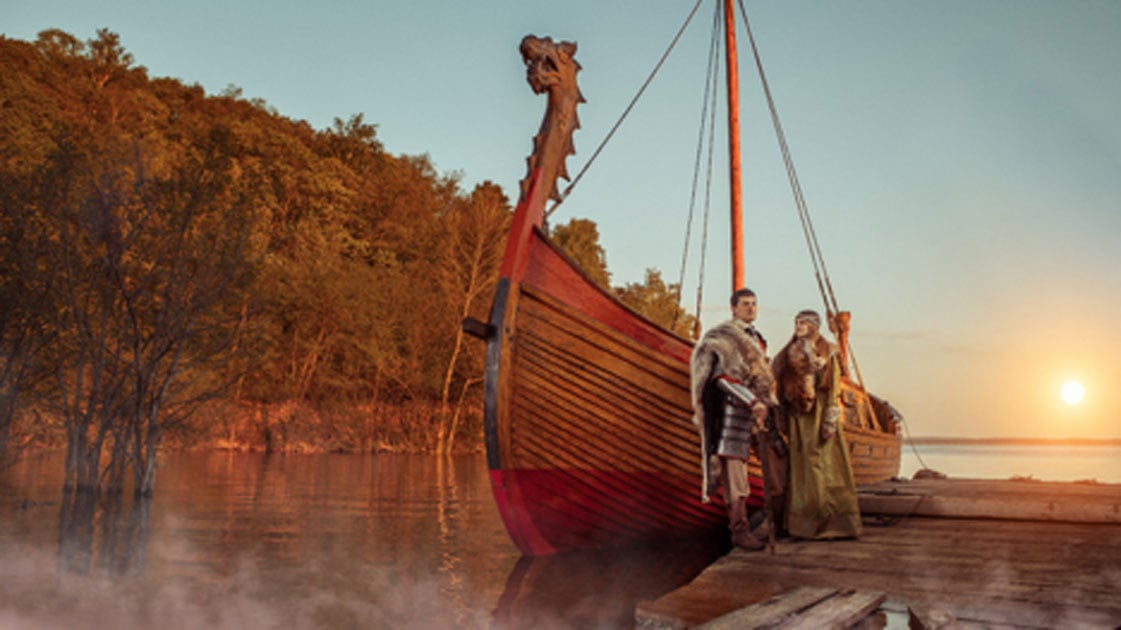Vikings Didn’t Just Pop into Canada for a Visit, They Stayed for Centuries
Do you remember that 1992 electro-techno tune by KLF America What Time is Love, which at the beginning declares this music is a 1000 year celebration of the Vikings of modern day Norway reaching America? Well that actually happened, and now a team of scientists has been digging new truths from a bog near the ancient Norse explorers’ Newfoundland settlement - which indicates the “barbarian” Vikings might have integrated with natives of North America over 1000 years ago.
Five centuries before the Christian discovery of the New World, Norse (ancient Norwegian) explorers established a remote colony in Newfoundland known today as L’Anse aux Meadows, and while it has always been believed occupancy at the site was short-lived, microscopic new finds are demanding the length of its occupancy be revised, and then some!
Three days ago I reported on the team of archaeologists who in 2018 excavated a peat bog almost 100 feet (30 meters) east of L'Anse aux Meadows and discovered a layer of “ecofacts” - environmental remains - radiocarbon dating to the “12th or 13th century.” Paul Ledger, the lead author and postdoctoral fellow at Memorial University of Newfoundland, who took the sedimentary core samples from the bog, discovered “a layer of trampled mud littered with woodworking debris, charcoal, and the remains of plants and insects.” He found that they dated to the late 1100s or early 1200s, long after the Norse were thought to have left Newfoundland, never to return.
- Dispute Over Evidence Of Cannabis Use By Vikings In North America
- Did a Native American travel with the Vikings and arrive in Iceland centuries before Columbus set sail?
- Did the Vikings use crystal sunstones to discover America?
Ledger spoke to ARSTechnica about the discoveries from the bog and he said they include: “a bronze cloak pin, a soapstone spindle piece, iron nails, and rivets,” which make it clear to archaeologists that the “Norse were here.” Stone tools found at the site, believed to have belonged to the Beothuk people, are thought to have been brought by natives revisiting their traditional hunting camp to scavenge metal tools and resources left behind by the European fishermen.

A Beothuk woman, possibly Demasduit (Mary March). (Public Domain)
Everything About this Place Requires Re-Thinking
The radiocarbon dating undertaken by Ledger and his colleagues was published on Wednesday this week on PNAS and suggests the Viking adventurers arrived in Newfoundland as early as 910 AD and may have left as late as 1145 AD. This means the Norse explorers stayed much longer than historians or archaeologists currently believe and another ‘really’ interesting aspect of the project is that the indigenous occupation of the site started between “710 and 1130 AD” and between “1540 and 1810 AD”. There are limited ways in which to account for such over-laps and one suspected answer is “cultural interaction.”
What Ledger finds “really interesting” is the pollen tests and dead insects, including Simplocaria metallica from Greenland and Acidota quadrata found “just south of the Arctic Circle.” And he told ARSTechnica that in Greenland and Iceland archaeologists generally study “the open areas between buildings and the environment around settlements” whereas in the North Atlantic teams “tend to focus solely on the structures themselves rather than the spaces outside and between them”. He concluded that the microscopic content of this bog layer reflects similar deposits in Greenland, “however, we have no real point of comparison for Indigenous sites.”
- History Rewritten! Early Humans were in North America 130,000 Years Ago
- Long-lost Native American Fort of the Norwalk Discovered in Connecticut
- Witchcraft, Worship or Public Shaming? The Puzzling Purpose of Totem Poles in North America

C) Insects and seeds (left to right): Eanus macullipennis, S. metallica, A. quadrata, Pycnoglypta sp. , and dock seed (cf. R. aquaticus). ( D) Pollen (left to right): H. lupulus-type, Juglans, and cereal-type. ( E) Wood debitage. (Paul M. Ledger, Linus Girdland-Flink, and Véronique Forbes)
What’s Next at this Fascinating Remote Viking Outpost?
When the team of archaeologists return to Newfoundland next month they will attempt to map how far the peat bog extends in relation the structures and this will require reopening some excavated trenches from the 1970s digs and some new test pits. Furthermore, the new paper’s Coauthor Linus Girdland-Flink of Liverpool John Moores University plans to examine the “DNA of dock seeds” which is a type of grain that Vikings mixed with sediment and waste materials to determine where exactly the species came from. And while some of the scientists are looking into the macrocosm for answers, they also plan to “bring some geophysical methods to bear on the site.”
In 2010 the government of Canada marked the 50th anniversary of the discovery of the Viking remains at the L’Anse aux Meadows by Helge and Anne Stine Instad, and their guide, local fisherman George Decker, in 1960, which you can read about in this Medievalists article.

Norse long house recreation, L'Anse aux Meadows, Newfoundland and Labrador, Canada. (D. Gordon E. Robertson/CC BY SA 3.0)
Top Image: Viking explorers Source: diter / Adobe Stock
By Ashley Cowie




















Comments
this sounds uneducated:
“ are thought to have got here by natives”